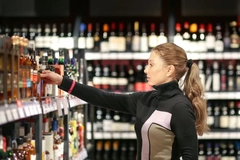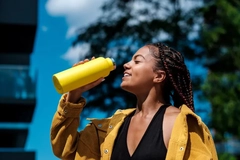Mascots on packaging accelerate plant-based product choices, study finds

Mascots on packaging can “demonstrably” influence consumer behavior subconsciously, driving them to select plant-based F&B products, according to a new study that looks into the significance of design choices.
“Although people initially claim not to pay much attention to mascots on packaging, their consumer choices often reveal a preference for such products,” Ingrida Košičiarová, Zdenka Kádeková and Dávid Takács, the study authors and researchers at the Slovak University of Agriculture in Nitra, tell Packaging Insights.
The study looking at the packaging of oat drinks and ice cream packaging and published in Sustainability suggests that mascots can support the normalization of plant-based food consumption, particularly by making products accessible and communicating positive messages in an engaging way.
“The most effective mascots were those that represented a strong element of their product or brand, conveyed positive emotions, and subtly educated consumers without being intrusive. Their role went beyond decoration. They acted as accessible guides to sustainable choices.”
A mascot does not require additional layers of packaging or complex design, as it can be applied even on recycled or minimalist packaging formats, the researchers add. “Visual appeal and sustainability can go hand in hand when design decisions consider environmental aspects from the beginning.”
The power of mascots
The authors conducted primary quantitative research between October 2024 and March 2025 using an online questionnaire distributed across Slovakia. The survey covered demographics, dietary habits, decision-making, visual preferences, attitudes toward plant-based packaging, and mascots.
 The packaging designs of the four evaluated oat milk brands (Image credit: Slovak University of Agriculture in Nitra).The study demonstrates the “subtle but powerful” role of visual cues in steering purchasing decisions toward more sustainable options, according to the research team.
The packaging designs of the four evaluated oat milk brands (Image credit: Slovak University of Agriculture in Nitra).The study demonstrates the “subtle but powerful” role of visual cues in steering purchasing decisions toward more sustainable options, according to the research team.
“Our data confirmed that mascots resonated with all genders and age groups, but with significant differences. For example, we found that women tended to prefer clearly defined, straightforward, and more classic mascots, while men were more open to unconventional designs, whether in terms of type or graphic style.”
At the same time, the study found that mascots were particularly attractive to “visually oriented” consumers who are generally interested in graphic design and packaging aesthetics. “For this group, mascots had a particularly strong influence on purchasing decisions.”
The researchers point out that some iconic mascots are more recognizable to consumers than influencers or celebrities.
”This highlights the irreplaceable role that mascots have played in the past and will continue to play in marketing communications and in shaping consumer behavior across generations.”
Making plant-based appealing
Mascots on packaging have the potential to normalize plant-based consumption across mainstream audiences and even shape children’s current and future eating habits, the researchers argue.
“When it comes to children, mascots have potential, because they are naturally attracted to friendly characters on packaging. At the same time, influencing children's eating habits is a sensitive task that requires responsible communication.”
The researchers say that a mature and responsible society educates future responsible consumers from an early age, adding that it is important to direct marketing communication aimed at children in a careful manner.
“Due to their similarity to animated characters, using mascots is a very effective tool in this process and can play an irreplaceable role in shaping these values.”
They acknowledge that encouraging plant-based diets should not be left to mascots alone: “addressing such a complex challenge requires an integrated mix of communication tools.”
AI accelerates communication
 The effectiveness of mascots can be amplified through connective packaging.The effectiveness of mascots can be amplified through digital extensions, such as social media, AR, and brand apps through connective packaging to amplify their effectiveness.
The effectiveness of mascots can be amplified through connective packaging.The effectiveness of mascots can be amplified through digital extensions, such as social media, AR, and brand apps through connective packaging to amplify their effectiveness.
“Once a company decides to use a mascot, it should not remain limited to packaging, but be consistently integrated across social media, websites, e-shops, brand apps, and other channels. In the digital space, a simple two-dimensional illustration can be transformed into an interactive 3D character that speaks, moves, and engages directly with consumers.”
The researchers say that this can create “a much richer” experience and represents an opportunity to strengthen both sustainable messages and brand loyalty.
“The rise of AI and modern digital tools is opening up entirely new possibilities for mascots. What was once a purely traditional marketing communication tool can now be transformed into an interactive, evolving medium thanks to 21st century innovations.”
“This shows how classic communication tools can become cutting-edge when combined with technology and current consumer trends.”
Today’s notion of attractiveness is linked with simplicity and eco-friendly aesthetics, the researchers continue. They argue that mascots are flexible enough to adapt to this trend.
“Mascots should not be seen merely as short-term promotional tools. They have the potential to act as long-term ambassadors for sustainable eating habits, but this requires responsible communication, especially when addressing children,” the researchers say.
“We see this as an area with great potential for further research, particularly in terms of understanding how mascots influence different consumer segments.”












